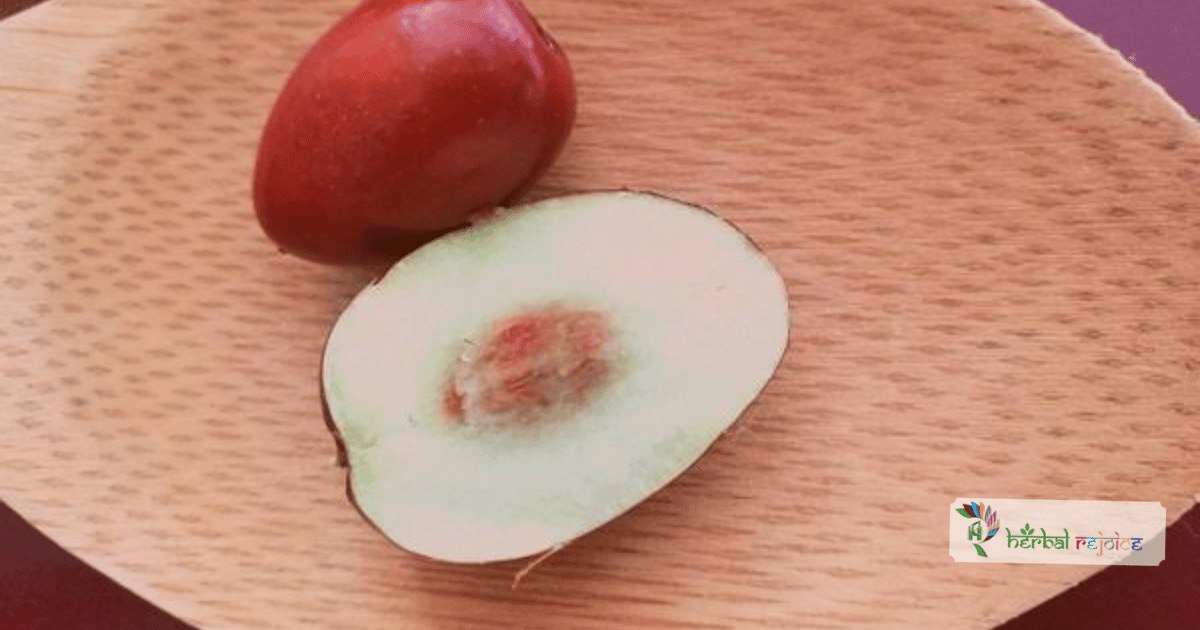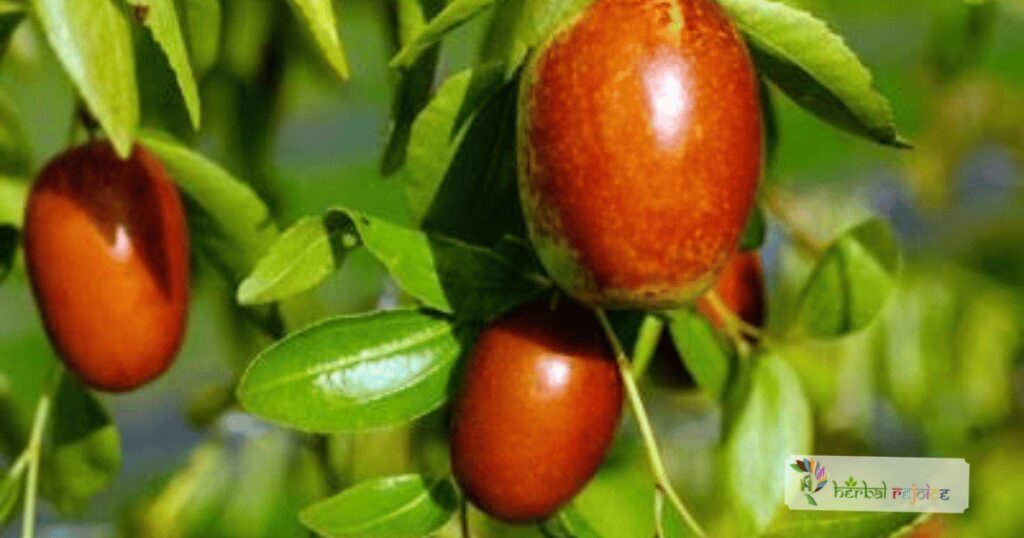Introduction to Jujube
Ziziphus jujuba, also known as the Indian Jujube or Common Jujube, is a plant species found throughout India and in the outer Himalayas up to 1,350 meters.
It belongs to the family Rhamnaceae. In Ayurveda, it is referred to as “Badar” or “Kola,” while in Unani medicine it is known as “Ber.” In Siddha medicine, it is called “Handai.”
Jujube is used to treat diarrhoea and reduce rheumatic inflammation and gout. Jujube paste is applied on the abscesses and boils.
Health Benefits Of Jujube
The fruits of Ziziphus jujuba have various medicinal properties. Wild varieties of the fruit are known for their astringent, anodyne, cooling, stomachic, and styptic properties. Ripe and dry cultivated varieties of the fruit have a mild laxative and expectorant effect.
The seeds of the fruit have antidiarrheal properties. The kernels of the fruit are considered antispasmodic, sedative, and antiemetic. The leaves of the plant are astringent and diaphoretic.
The stem bark is also astringent and is used in the treatment of diarrhea. The root bark, when applied externally, acts as a purgative and can be used to alleviate rheumatic inflammations and gout. Additionally, a paste made from the leaves and twigs of Ziziphus jujuba can be applied to abscesses, boils, carbuncles, and strangury.
Chemical Constituents
Studies have shown that the leaves of Ziziphus jujuba contain protopine and berberine, both of which have exhibited anticholinergic activity. The fruits of the plant, on the other hand, contain cyclic AMP and cyclic GMP, as well as Sisyphus saponins I, II, and III.
They also contain jujuboside B and p-coumaroylates of alphitolic acid. The seeds of Ziziphus jujuba contain saponins, specifically jujubosides A and B, which yield the sapogenin jujubogenin.
It is worth mentioning that a variety of Z. jujuba grown in Haryana, known as Naazuka, contains sugars at a concentration of 10.5% and ascorbic acid at a concentration of 205 mg/100 g.

Dosage Of Jujube
For medicinal use, the recommended dosage of dried fruit pulp without seeds is 3-6 grams. The stem bark can be taken as a powder at a dosage of 3-5 grams or can be decocted at a dosage of 10-20 grams.
Conclusion
In conclusion, Ziziphus jujuba is a plant species with various medicinal properties. Its fruits, seeds, kernels, leaves, stem bark, and root bark all have different uses in traditional medicine.
Further research on this plant and its components can potentially uncover more of its therapeutic benefits.
Frequently asked Questions(FAQs)
What is Ziziphus jujuba?
Ziziphus jujuba, also known as the Indian Jujube or Common Jujube, is a plant species found throughout India and the outer Himalayas.
What family does Ziziphus jujuba belong to?
Ziziphus jujuba belongs to the family Rhamnaceae.
What are the medicinal properties of the fruits of Ziziphus jujuba?
The fruits of Ziziphus jujuba have astringent, anodyne, cooling, stomachic, styptic, laxative, expectorant, antidiarrheal, antispasmodic, sedative, and antiemetic properties.
What are the medicinal properties of the leaves of Ziziphus jujuba?
The leaves of Ziziphus jujuba are astringent and diaphoretic.
What is the use of the stem bark of Ziziphus jujuba?
The stem bark of Ziziphus jujuba is used in the treatment of diarrhea.
How is the root bark of Ziziphus jujuba used in traditional medicine?
The root bark, when applied externally, acts as a purgative and can be used to alleviate rheumatic inflammations and gout.
How can a paste made from the leaves and twigs of Ziziphus jujuba be used?
A paste made from the leaves and twigs of Ziziphus jujuba can be applied to abscesses, boils, carbuncles, and strangury.
What compounds have been found in the leaves of Ziziphus jujuba?
The leaves of Ziziphus jujuba contain protopine and berberine, both of which have exhibited anticholinergic activity.
What compounds have been found in the fruits of Ziziphus jujuba?
The fruits of Ziziphus jujuba contain cyclic AMP, cyclic GMP, Sisyphus saponins I, II, and III, jujuboside B, and p-coumaroylates of alphitolic acid.
What compounds have been found in the seeds of Ziziphus jujuba?
The seeds of Ziziphus jujuba contain saponins, specifically jujubosides A and B, which yield the sapogenin jujubogenin.
What are the sugar and ascorbic acid concentrations in Naazuka, a variety of Ziziphus jujuba grown in Haryana?
Naazuka contains sugars at a concentration of 10.5% and ascorbic acid at a concentration of 205 mg/100 g.
How much dried fruit pulp of Ziziphus jujuba is recommended for medicinal use?
The recommended dosage of dried fruit pulp without seeds is 3-6 grams.
How can the stem bark of Ziziphus jujuba be consumed for medicinal purposes?
The stem bark can be taken as a powder at a dosage of 3-5 grams or can be decocted at a dosage of 10-20 grams.
What is Ziziphus jujuba referred to as in Ayurveda?
In Ayurveda, Ziziphus jujuba is referred to as “Badar” or “Kola.”
What is Ziziphus jujuba known as in Unani medicine?
In Unani medicine, Ziziphus jujuba is known as “Ber.”
What is Ziziphus jujuba called in Siddha medicine?
In Siddha medicine, Ziziphus jujuba is called “Handai.”
What are the traditional uses of wild varieties of Ziziphus jujuba?
Wild varieties of Ziziphus jujuba are known for their astringent, anodyne, cooling, stomachic, and styptic properties.


